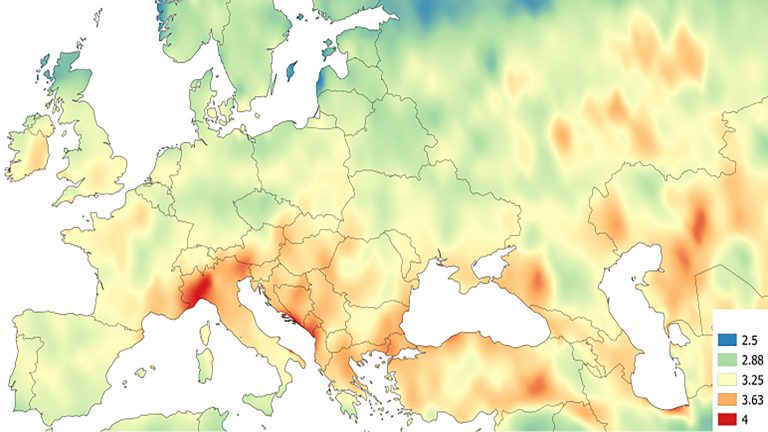Jun 3 2020
Power generation using solar or wind energy relies on the abundance of proper weather conditions. Therefore, finding the ideal approach for storage is vital to the use of sustainable energy in the future.
 Spatial distribution of the ratio of power to storage days for solar energy sources when storage is increased from 2 to 5 days. Image Credit: Jacek Kapica.
Spatial distribution of the ratio of power to storage days for solar energy sources when storage is increased from 2 to 5 days. Image Credit: Jacek Kapica.
A study reported recently in the Journal of Renewable and Sustainable Energy, by AIP Publishing, determines the main indicators that will help strike the balance between the harvesting capability and the green energy storage capacity, as well as find out a region’s energy potential.
The study was performed by Jacek Kapica, from the University of Life Sciences in Lublin, Poland. Kapica collected information from the NASA Langley Research Center POWER Project to finish his study.
The wind and solar energy sources have big potential. However, in order to increase their share in the overall production, there is a need for a greater storage capacity.
Jacek Kapica, Researcher, University of Life Sciences
The indicators that were determined by Kapica were the ratio of power generation to storage days, the ratio of photovoltaic to wind energy, and a dependability enhancement indicator. Kapica claims such factors can be employed to help the researchers find a solution to the long-term problem of sizing power generation and energy storage units.
The investors and designers of wind and solar energy systems need indicators to help them make decisions about the size of the generator power and storage capacity. This study reveals that, in some cases, the distance of just several dozen kilometers can improve or decline the generation power to storage capacity ratio.
Jacek Kapica, Researcher, University of Life Sciences
Kapica identified that the increase in power reliability from 95% to 98% has an impact on the energy generation units’ nominal power at a specified storage size.
Using the indicators, 5,701 locations throughout Europe were studied, and they can even be used for regions around the world.
I have determined how increasing the capacity of energy storage influences the possibility of decreasing the power of the generating unit and how does the relationship between storage size and generation power influence the reliability of the power supply in different regions of the continent.
Jacek Kapica, Researcher, University of Life Sciences
Apart from designing such indicators, Kapica found out the perfect places in Europe where wind or solar energy could be farmed. Furthermore, the results are applicable to both stand-alone systems and grid-connected systems.
Kapica noted that future studies might examine how the prospects of renewable energy will be influenced by climate change.
“There is also room for a study that takes the unit prices of various technologies into account, as the economy is fundamental in every investment,” stated Kapica.
Journal Reference:
Kapica, J., et al. (2020) Wind and photovoltaic potential in Europe in the context of mid-term energy storage. Journal of Renewable and Sustainable Energy. doi.org/10.1063/1.5131560.